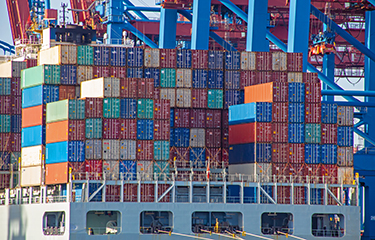Labor disputes are disrupting the flow of U.S. shipping just as the busy summer season is getting underway.
"No shows" by members of the International Longshore and Warehouse Union to protest the lack of a contract agreement with the Pacific Maritime Association, which represents the U.S. West Coast ports, have resulted in congestion and delays, CNBC reported.
Average wait times for container vessels attempting to enter Los Angeles have increased to 36 hours, with service taking between two to five days.
The ports of Oakland and Long Beach, both in California, have also been affected by labor shortages, and the port of Seattle shut down operations on 10 June, because of labor disputes. Shipments from Alaska to the continential U.S. are likely to be impacted, according to Anchorage Port Spokesman Jim Jager.
“Any impact on shipping out of Seattle-Tacoma area is going to have an impact on Alaska, just because we’re getting all of our goods there, or the vast majority,” he told Alaska Public Media.
Global shipping traffic is still down compared to last year, but is up over pre-pandemic figures, according to FreightWaves. But the U.S. labor disputes could jeopardize that progress, Hapag-Lloyd CEO Rolf Habben Jansen told the publication.
“I hope the [labor contract] negotiations end soon, because it’s in nobody’s best interest to have unrest on that front as we move into peak season,” he said.
National Retail Federal Vice President for Supply Chain Jonathan Gold told FreightWaves the labor-related delays are causing the companies he represents to reconsider shipping to the U.S. West Coast.
“If labor and management can’t reach agreement and operate smoothly and efficiently, retailers will have no choice but to continue to take their cargo to East Coast and Gulf Coast gateways,” Gold said.
However, that strategy could be imperiled by a drought in Panama, which has lowered water levels in the Panama Canal to the point where containers ships are having to travel with lightened loads so they don't hit bottom. Shipping companies have been hit with higher fees and load restrictions, and as a result, are planning to raise prices on routes that use the canal, according to gCaptain.
Labor issues are also affecting shipping across Europe, with union strikes in France and walkouts in the port of Hamburg, Germany triggering service delays in May. Even so, the average price to ship a 40-foot container from Europe has dropped to USD 1,400 (EUR 1,292), the lowest it has been since before the Covid-19 pandemic. Heavy price competition has continued to push prices down, with bigger freight forwarders providing below-market rates to push out competition, according to shipping logistics and data firm Container xChange.
“Both the U.S. and Eurozone markets are experiencing disturbances contributing to a significant loss in consumer confidence, creating a ripple effect," Container xChange Christian Roeloffs CEO said. "Since the pent-up demand observed in late 2021, the industry is waiting for a demand comeback, which seems less likely in the coming peak season. Of course, there will be some demand, but rather subdued.”
Dampened demand due to a supply-demand imbalance means global shipping rates have not risen as a result of the logistical issues facing shippers, according to Roeloffs.
"Now we have labor disruptions and the Panama Canal drought, which in normal circumstances would lead to an uptick in freight rates as they absorb effective capacity, but any significant price effect is now highly doubtful in the current market," Roeloffs said. “There are enough and more reasons to be pessimistic. With the peak season coming, the industry sentiment is negative. The industry is waiting for a demand comeback which doesn’t seem anywhere on the horizon.”
One bright spot in the global shipping sector is the Middle East, where ports across the region are seeing an increase container traffic.
Container throughput in Saudi Arabia increased 13.3 percent in April 2023 year-over-year, with the number of 20-foot equivalent units (TEU) being transfered through the country's ports rising from 601,429 to 681,663 in the month, according to the Saudi Ports Authority.
Photo courtesy of Felix_Fotos/Shutterstock







